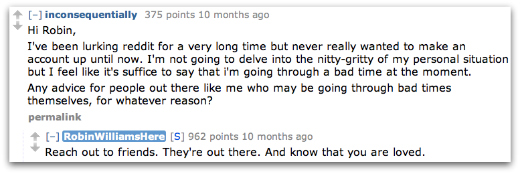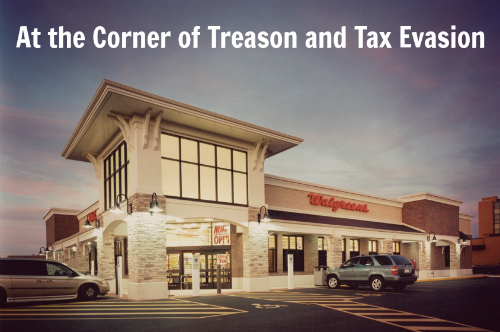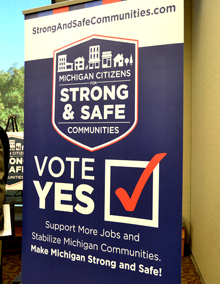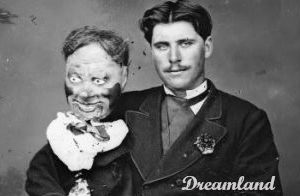Many of us attribute the so-called golden age of zines to the rise of Kinko’s, and their notoriously lax oversight of night shift employees, who could always be counted on to fire up a copier and look the other way in exchange for a beer. Perhaps just as importantly, though, Tower Records was entering an enormous growth phase at the same time, opening stores around the world, all of which provided shelf space for DIY publishers with unique points of view that could never be found represented at the likes of Barnes and Noble. From notoriously confrontational work like Answer Me and Boiled Angel, to obsessively personal publications like Crimewave USA and Dishwasher, Tower could always be counted on to push the envelope and take a chance on something that fell well outside the commercial mainstream. And, interestingly, it can all be tracked back to one man, today’s guest, Doug Biggert.
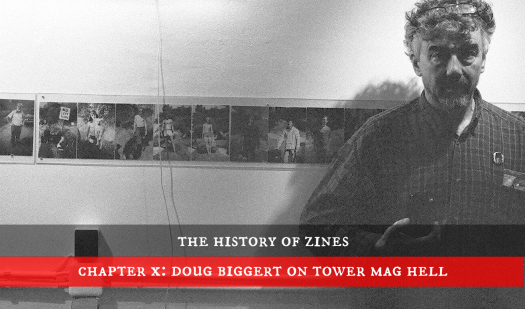
MARK: As I mentioned to you, Doug, I’ve recently set out on a quest to interview all of my old friends who were publishing zines back in the early ‘90s. And, in the course of doing this, Pete Jordan, the man behind the zine Dishwasher, suggested that I bend the rules a bit and talk with you. His exact words, if I remember correctly, were, “Doug might be the closest thing there ever was to a patron of zine editors.” Not only did you do all of the zine buying for Tower Records and Books, but, as I understand it, you were also incredibly generous toward many of us on a personal level. So, let’s start with a simple question… Why? Why did you invest so much time, energy and money in zines?
DOUG: Why not? I was always trying to find something that made Tower unique. I scouted newsstands everywhere I went, buying samples of anything that looked interesting. Actually, at first, I just copied down contact info rather than buying copies, but then I found out that I could put in an expense request and get reimbursed.
MARK: How’d you get your start at Tower?
DOUG: The story starts in 1977, after a year of chosen unemployment… I’d asked to be laid-off from my job as a favor. Not bad, right?
MARK: What had you been doing?
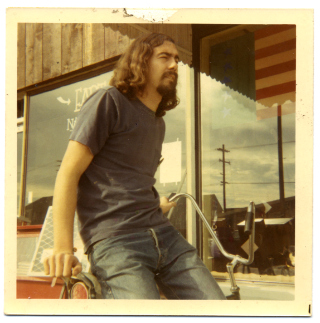 DOUG: I’d had my first real job in years… The sandal shop, where I’d been working before that, wasn’t a real job. I had, “Call before you come, We’re not open all the time,” printed across the bottom of our receipts. And I didn’t make the sandals. The shop was where the owner had started the business, but, since then, he’d started a small factory up in LA. The shop was cheap for him to keep, though, and it gave him an excuse to drive down to the beach. He was the only boss I’ve ever had who really dug me. He once asked me how much I was stealing. I was getting 20% of sales, so, if we sold $100, I got $20. But, on some days, we only sold about $20. My answer was, “Enough.” But living at the beach began to get to me, and I thought that maybe I ought to spend a month a year in Watts? Instead I moved to San Francisco, where I began painting houses.
DOUG: I’d had my first real job in years… The sandal shop, where I’d been working before that, wasn’t a real job. I had, “Call before you come, We’re not open all the time,” printed across the bottom of our receipts. And I didn’t make the sandals. The shop was where the owner had started the business, but, since then, he’d started a small factory up in LA. The shop was cheap for him to keep, though, and it gave him an excuse to drive down to the beach. He was the only boss I’ve ever had who really dug me. He once asked me how much I was stealing. I was getting 20% of sales, so, if we sold $100, I got $20. But, on some days, we only sold about $20. My answer was, “Enough.” But living at the beach began to get to me, and I thought that maybe I ought to spend a month a year in Watts? Instead I moved to San Francisco, where I began painting houses.
I was on food stamps in San Francisco. I met guy while applying for food stamps and he gave me work at some apartments that he managed. Eventually I had had a big job with a non-union painter, a four story apartment building with two colors of trim on 140 windows and 5 levels of scaffolding. The guy I worked for taught me the basic skills. So, that’s what I did during my three or so years in San Francisco. It was cold there. It still is.
At some point, an old friend who had moved from Balboa to Sacramento visited me in San Francisco. And he said, “Comrade, you like heat – why don’t you move to Sacramento?” So, two weeks later, I did. And a French friend had a job offer there that he couldn’t accept because he didn’t have a work permit. So he said, “You should go and apply.” I did, and I was hired at ESS, a high end speaker company. I was getting regular checks. Then, a year and a half later, I asked to be laid off.
MARK: You just felt like you needed a break?
DOUG: Yeah. I finally read Ulysses … very slowly. I had cheap rent, and things were good. Then, suddenly, it ended. Or it was going to. And the taxi company wouldn’t hire me. I applied at a Tower Books here in Sacramento, but nothing came of it. Then I remembered that I knew a chap by the name of George Horton who knew some people at Tower, and I reached out to him. He said, “I just happen to be taking the Manager and Assistant Manager out to lunch…” And, by that evening, I was hired. Of course it took five or six weeks before I could actually start working, and, by then, I was broke! And, on top of that, my car was stolen at gun-point. I eventually got it back, but I had to ride my bike to work that first night. I remember there was a gentle rain. I got there at 12:05 AM on January 3, 1978, to work my first night shift.
… very slowly. I had cheap rent, and things were good. Then, suddenly, it ended. Or it was going to. And the taxi company wouldn’t hire me. I applied at a Tower Books here in Sacramento, but nothing came of it. Then I remembered that I knew a chap by the name of George Horton who knew some people at Tower, and I reached out to him. He said, “I just happen to be taking the Manager and Assistant Manager out to lunch…” And, by that evening, I was hired. Of course it took five or six weeks before I could actually start working, and, by then, I was broke! And, on top of that, my car was stolen at gun-point. I eventually got it back, but I had to ride my bike to work that first night. I remember there was a gentle rain. I got there at 12:05 AM on January 3, 1978, to work my first night shift.
 MARK: And how’d you get into the magazine side of the business?
MARK: And how’d you get into the magazine side of the business?
DOUG: It happened early on. They’d be delivered at the beginning of my shift, so my job was to count them, pull returns, etc. And, at some point, it seemed to me we could do a better job with magazines, and I started fussing with them, and changing a few orders, and so on. I eventually asked my boss if I could do more, and she said, “Do whatever you want, just don’t embarrass me.”
And I started doing stuff… in spades. A year or two later, the local paper did a front page story in the local section titled, “Sacramento gets a big league newsstand,” with a color picture of me. And this led to my first lunch with the three old guys: Russ Solomon (Tower owner and founder), Bud Martin (the guy who made things work, and would later become my consigliere), and Tony Valerio (who paid the bills). Heidi, my boss, was there too. They said, “Doug, can you do for the other Tower bookstores what you did at the Watt store?” I said that I could. I just needed some help and a place to ship from, I told them.
Well, within a pretty short amount of time, we had a pocket office and two employees. Things were going pretty well. And then there was a second lunch. “Can you do the record stores too?”, they asked. I said that I could, and they told me to do all of them. And I did it my way.
We did some unusual things, like carrying out-of-town Sunday papers, which no one else was doing. You couldn’t make money doing this, but what you lost was made up for in all the people excitedly saying stuff like, “Honey, they have a paper from Australia, and the Chicago Tribune!” Sales were going great. One January, I was in Russ’s office for some reason, and he had the total sales for the company on his desk. He asked me what I thought we’d done in the bookstores for magazine and papers. Off the top of my head, I said, “Six million!” I was off by 1.5%.
MARK: And how many stores were in the chain at this time?
DOUG: At that point, when I first started, there were 10 bookstores and 4 record stores with full or semi-full newsstands. All of our record stores carried Rolling Stone, Guitar Player, etc. Ten years later, I think we had about 50-55 newsstands, counting the ones in our bookstores… All the major magazines wanted to be in Tower.
We started with five record stores, working on their newsstands. They were relatively close-by. I could drive to each of them… which was good, as I had to design the magazine racks for our shop to build. That, by the way, was one of the hardest things I’ve ever done… Then, we started adding record stores five at a time. And each new store that opened had about 30 to 50 feet of magazine display space. It was a huge undertaking. Generally things went well, but I had to learn some things along the way. Austin didn’t want bridal magazines. Toronto couldn’t sell some U.S. editions. It wasn’t a one-size-fits-all kind of thing. Another problem was training individuals in the stores about returns and such, and this, admittedly, was not my greatest hour. I could tell you things about New York, but I don’t want to get into it.
When I quit in 1999, almost all of our record stores that weren’t next to a bookstore had magazines, and there were about 70 to 75 in-store newsstands.
MARK: And how did you come to start incorporating zines into the magazine mix?
DOUG: On my first trip, by car, to the northwest… I sometimes slept in my car, because I didn’t know if I’d get expenses reimbursed… I was in Vancouver, checking out a small record store, and I stumbled on a zine. I bought it, and the idea came to me that we could sell it in our stores. I remember that there was a curling store a few doors down, and that the stones were really heavy. That’s all I remember. This was a long time ago, before the influx of money from Hong Kong started changing Vancouver. I didn’t have any real reason to be there. I’d just never been, and I thought that I should check it out.
MARK: Was it a hard to sell the folks running the company on making space for zines? Was it difficult to carve out space for alternative publications as the chain expanded, opening stores across the globe?
DOUG: Something I heard in the first few years at Tower served me well… “It’s easier to beg for forgiveness than to ask for permission.” It was excellent advice. But, when it came to zines, I didn’t need to talk anybody into making space. I was given a lot of space in almost every store. The people who worked the magazines, doing the displays, handling the returns, etc., would sure as hell rather have Answer Me, Propaganda, or Tattoo Life, than People or Modern Bride. So I never had to ask anybody for much of anything.
One brilliant quality of Tower was that, if you were doing well, you were pretty much left alone. I paid attention to the managers of the various stores… They were usually supportive, as adding magazines brought additional sales… I also depended on them to give me an employee with some smarts and interest. I’d been able to make a difference at my store because I had good people. A lot depended on finding the right person to handle magazines in each store. I trained or coached all of the bookstore magazine folks, and tried to do the same with the people in the record stores. This became more difficult, though, as the number of record stores increased. I spent hours on the phone answering questions, or questioning. (“Where are your returns?”) I didn’t do a very good job in identifying and training another me, but there were some true talents discovered.
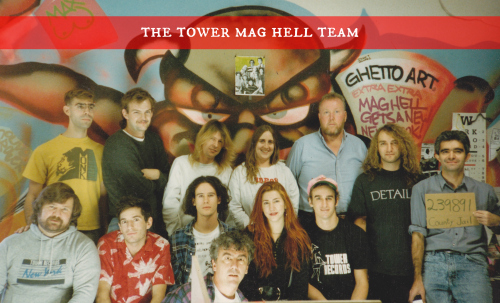
MARK: What were some of your favorite zines, and what did you like about them?
DOUG: Not sure what my first zine was. Nancy’s Magazine was certainly one of the first, and it’s still my favorite. We’re still in contact. She lives in Columbus now, and has two sons. She’s a librarian, teaches, and writes poetry.
Factsheet Five! I spent hours on the phone with Mike Gunderloy. I remember that, when he gave up the magazine, he said that it had changed hands in a poker game. He added, “It’s not clear who won.” He worked for about 5-cents and hour, he once said. Editing and publishing the bible, it would seem, is not the road to riches.
I liked There’s Something about a Train. It was an almost book-length rail riding zine. I wrote to him about distribution and he explained that he couldn’t, because he only made 50 or 60 copies of each one. I got back to him after some talk in our print shop, suggesting that we print it. We worked out a deal where we’d print 500, and he’d take what he wanted… usually around 100… and we’d sell the rest. We even printed the color xerox cover, and pasted it on.
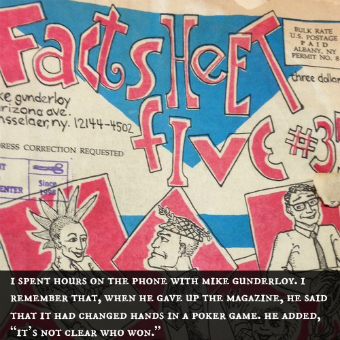 Another was Infiltration from Toronto, a zine about going where you weren’t supposed to go. He sent me an issue along with another title, and I was fascinated. We carried that for maybe 15 issues. It was the same size as Diswasher.
Another was Infiltration from Toronto, a zine about going where you weren’t supposed to go. He sent me an issue along with another title, and I was fascinated. We carried that for maybe 15 issues. It was the same size as Diswasher.
I’d include Boiled Angel too. It was a folded 8.5” zine from Mike Diana in Florida. Mike Gunderloy called it a prime candidate for banning in the 90’s. In fact, he was the only comic artist who went to jail on obscenity charges. We were, I believe, his sole distributor back then. And I only bought 20 copies of two issues. It was engagingly offensive. And he might not have even been 20 when he started. I sent five copies to the bookstore in Philly. And, when I visited the mag guy, who I’d known for a long time, he brought out the copies and said, “I don’t think I can sell this.” “It’s too much,” he said. “No problem,” I said, “just send them back with your returns.” But then he said that he’d take one. He said he knew of someone who’d want one. And it went on like that. We sold them all without ever having put them out on the shelf. It was that kind of a zine. Eventually a book came out – The Worst of Boiled Angel . Somewhere around here I have a promo copy, and a regular copy. I just checked, and they’re going for near $100 on Amazon. I don’t think I’ll sell them, though. I met him somewhere along the way. He’s a quiet blond guy, the kind of kid mothers would pick out of a yearbook and ask if their daughters knew him.
. Somewhere around here I have a promo copy, and a regular copy. I just checked, and they’re going for near $100 on Amazon. I don’t think I’ll sell them, though. I met him somewhere along the way. He’s a quiet blond guy, the kind of kid mothers would pick out of a yearbook and ask if their daughters knew him.
MARK: As time passed, I imagine that it got complicated dealing with so many independent publishers.
DOUG: One of the problems I had was finding a way to get the zines folks paid in decent fashion. I will say that what we were doing would have been impossible without a wonderful accounts payable department. The problem is that, to open 100 new accounts, soon to be 300, and then more, was near impossible. We needed a simpler way to pay. So, I figured out a system where we’d use consignment! All the stores already had consignment accounts, so that they could handle local music, or books, or whatever. And I took advantage of this. I’d tell a zine, “We’ll pay you for half of your order in 60 days – or as close to that as possible – and we’ll hold the other half until we receive a new order – or 6 months – when we’ll be able to subtract returns.” This wasn’t perfect, but, if you have a zine, you’re happy as a clam if you can ship issues to some megalith and then see money in a few months. We gained a good reputation as being fair and honorable. Ask Mike Gunderloy. Keeping track of all of this required a full time person on our end who was on top of it all. If I got a query, or a complaint, I would go up to the consignment desk and see what was going on. Bless the people who were working there… I would never have been able to keep track of anything myself.
MARK: How’d you decide what zines you’d stock?
DOUG: When I was traveling, I’d buy anything that looked interesting and take it home and peruse it, or get one of the guys who was a little hipper than me to check it out. Scott Miller was my go-to reader on everything modern music wise, and Joe Colley handled noise and esoteric stuff. I was good on graffiti… Eventually, there were a lot of people sending stuff to Tower, and to me.
MARK: So graffiti was your speciality?
DOUG: Yeah. They may have been in full color, but they were still zines… In 1998, the best graffiti magazine in the world came from Zagreb, Croatia. I think we took more than a thousand. This, to me, was what it was all about… We wanted to show people something they’d never seen before, something odd and wonderful.
I still love graffiti. I have a two-story piece on the back of my house right now.
We had a corner on the market when it came to graffiti and high-end stereo magazines. They were always hard to find, but I got them into our newsstands. More importantly, though, I got the stereo magazines into the large classical departments in the New York, San Francisco, Los Angeles stores. Later, the large distributors took over some of the titles, Ingram in particular. Our disco went from 50% to 40%, but it was much less work.
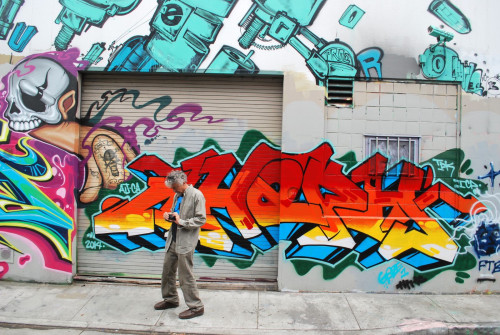
MARK: Speaking of distributors, like Ingram, I’m curious to know your perspective on Desert Moon, one of the bigger companies out there working with zines at the time… When they went under, they took a lot of us out of business with them.
DOUG: I had little to do with distributors, although I was flattered that Ingram and other folks shopped our racks for ideas. Ingram is the big whale in magazines now. There’s no place for the small guy. They also distribute an amazing percentage of the books to bookstores. They’re huge! Tower didn’t deal with them for years. Eventually, though, we did.
As for Desert Moon, I know that they didn’t pay some folks, but I really had no dealings with them, nor did Tower. I did meet JR at a convention or something once. Really, they weren’t of interest.
I found Fine Print interesting, though. I spent a day with Ken Oatman. We had a long lunch and some fine ales. There weren’t too many people who did what I did, so we got on well. We never did business, though. He’s now at One Source in Denver.
Ubiquity was interesting. I went out to visit them, and was really impressed by the way the guy there… I can’t remember his name, maybe Joe… ran the place. They had a lot of employees, and they seemed really happy. The only complaint I heard about them was that it was hard to get them to stop sending a title once they’d started.
When I left Tower, I got a call from the president of Eastern News. She was worried that Tower would stop carrying the weird stuff. She was worried that people wouldn’t be able to find it. It was a compliment, for sure. Eastern closed down not too much later. Ingram was just too efficient.
IPD was great. They took good care of me. But Ingram was the whale in the sea. None of those big guys were zine oriented, but Ingram picked up a few.
MARK: So, can you tell us about a few zines that you found, and how you found them?
DOUG: I saw issue #2 of Answer Me at a sidewalk newsstand on the side of the Soap Plant on Melrose. I was waiting for the traffic to die down before heading to Orange County for the night. It turned out to be a huge seller for us. I think we took four thousand of issue #5, the “rape” issue. It was a little touchy, but it worked out OK, despite the column in the Philadelphia Inquirer. After that column came out, Russ Solomon called me over to ask about the zine. I told him it had been selling from a pile on the base of the rack in the Philly bookstore for three months before the column. It was only in the major stores, and our more on top of it smaller stores. I thought it was controversial, but OK. It wasn’t pornographic, or beyond the level of commerce. He said, “If you’re on top of it, OK.”
Propaganda was a goth best seller. We sold tons in the UK. I found it at that newsstand in Seattle, in the U district, a place called Bulldog News. I don’t remember the newsstand owner’s first name, but he got quite angry when we picked it up for Tower. He accused me of stealing ideas. A year or two later, we were on a panel together at the bookseller’s convention, and we worked it out. Coincidentally, I just did laundry and found the t-shirt I’d bought at Bulldog News. I probably got reimbursed for it, along with the magazines I bought there… A little larceny.
Shotgun News. Not quite a zine, but I think I also found it in Seattle. We ended up taking over 20% of their circulation, as it was something that was really hard to find. The same thing happened with Hemmings Motor News. No one else would sell it, as the publisher wanted it sold non-returnable. I convinced Tony Valerio to write the checks, and we got rich.
MARK: Any other zines come to mind when you think back about what you put on your shelves?
DOUG: We carried a magazine on women smoking. It wasn’t quite porn, but it was in that realm. We also had one on rubber band aeroplane modeling. It’s apparently the most difficult kind of modeling… I’d talk to customers at various stores and ask them about what they liked… There were two scootering magazines, and we carried both. We also had a low rider magazine from Japan. We wanted anything that was hard to find, and would sell.
I took five thousand copies of the last issue of BOB, the Church of the SubGenius magazine, and we sold every one.
MARK: And how did you manage the growth?
DOUG: We were moving pallets of zines like Maximum Rock’n’Roll… We eventually had to set up a “break-up” point in North Philadelphia so that we could get stuff to the stores east of the Mississippi faster… The story of NE Philly is cool. I knew we needed to do something, as it took longer to get stuff to the east coast and midwest stores than it did to get stuff to London or Tokyo. I’d talked to the manager of the NE Philly store and he agreed that he had room, and said we could run a distro from there. I agreed to pay an employee and the rent for the square footage that we’d use. I went to the money guy, Bud Martin, twice with the proposal. Both times he said, “I’ll have to talk to Russ about that.” The third time, I was almost angry. This was a simple, brilliant idea! This time he said, “Tell me again what you need.” So, I did. And, when I was done, he said, “Do it!” I asked, “What about Russ?” And he repeated, “Just do it!”
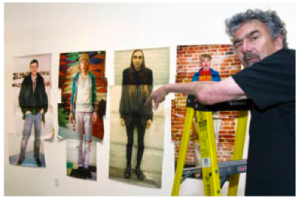 MARK: In my attempt to track you down, I came across a video of you which was shot by a French documentary film crew. In the video, you talk at length about a photography project that you began in the ‘70s. Can you tell us a little about it?
MARK: In my attempt to track you down, I came across a video of you which was shot by a French documentary film crew. In the video, you talk at length about a photography project that you began in the ‘70s. Can you tell us a little about it?
DOUG: For years, starting in the late ‘70s, I was taking pictures of hitchhikers. A hitchhiker is someone you may know for an hour, or a day, or, every so often, a little longer, yet, when you leave them, they’re gone. If I took a picture, I reasoned, I’d have a memory. I kept a small portfolio of photos in the car to help explain why I wanted to take their picture. This helped a lot. It also led me to look for hitchhikers, so that I could get more pictures. I almost always had a camera… I finally settled on the Olympus XA – a wonderful little pocket camera. (I’ve taken a picture of the moon rising with this camera.) One time I asked a chap if I could take a photo, and he said, “You took my picture a few years ago.” I showed him the album and he picked himself out. “That’s me,” he said, pointing… He’d turned fat.
By 2005, I had 400 photos or so. Xavier Carcelle, my French friend, was looking thru some albums at the bottom of my bookcase and said, “What are these?” Long story short, he took them back to Paris and set up a show at a gallery. I went over for the show. Good times. But I didn’t want to see anything. Then there was another show, and Xavier arranged for a book to be printed in Belgium. While I was in Paris, Xavier took the book into this incredible bookstore on the left bank. The store was so full, that an obese individual could not have navigated through it. Books all the way to the ceiling, which was quite high. He asked the owner if he would trade a copy of the hitchhiker book for another book. And the trade was made. Six months later, Bob Nickas, an independent curator in New York, bought that copy of the book and contacted me to set up a small show at White Columns in New York. 75% of the gallery was filled with Thurston Moore’s collection of beat and post beat zines and broadsides, but the white room was filled with hitchhikers. It was very cool.
There’s another set of photographs that I’m really proud of – the sandal shop wall. They’ve only been shown twice. They were shown once at the Newport Harbor Museum of Art (now the Orange County Museum of Art) in 1972, before I moved to San Francisco. Then, three years ago, they were shown with the hitchhiker collection, here at the Verge Gallery in Sacramento.
And, in May, I went to Paris and Brussels for two separate shows. I had to carry all 2,500 sandal shop photos so they could be scanned. The light boxes for the hitchhiker show were already there.
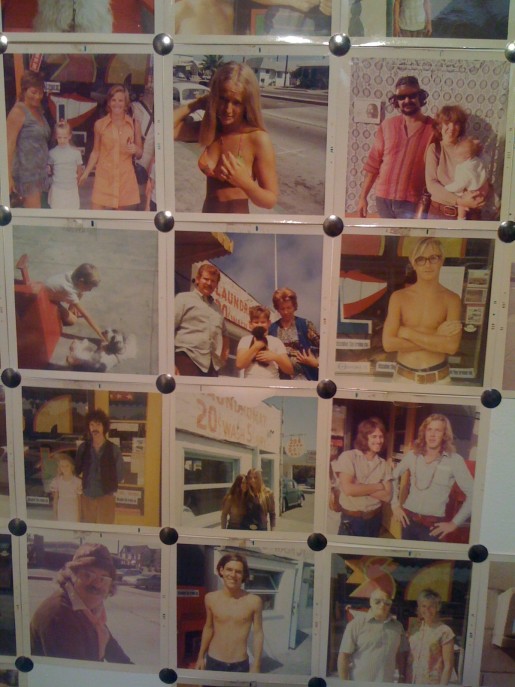
MARK: I’ve heard stories about you paying, out of your own pocket, for zines to be printed. I’ve also heard a story about you paying to fly a zine publisher somewhere when he didn’t have the money himself. I knew you were supportive. I remember that you always sent me nice notes. But I had no idea, back in the day, that you were doing things like buying tickets and paying for printing. If you don’t want to talk about it, that’s fine, but I’m curious how isolated these kinds of incidents were.
DOUG: Well, I’ve gotten into trouble. Several times, a small vendor, not one of the consignments, would write or call me about $42, or some such amount, that we owed them. I would check with our accounts payable department, and, for some reason, nothing would happen. So I just decided to send a check. Oh, did people get angry. It was kind of like dealing with the government. It still seems reasonable to me, though. As for the flight, I was traveling a lot, and collecting oodles of frequent flyer miles. One time, there was a 10,000 mile bonus for three Hertz rentals. On a one week trip on the east coast, I got 20,000 miles that way. That was enough for a coast-to-coast round-trip at the time. So, I offered a free ticket to two zinesters. Pete (Diswasher) said he wasn’t ready, and Aaron (Cometbus) took it. He went to Europe. It seemed like a cool thing to do. I gave away several international tickets. In fact, I think I only used the miles for myself once. Now, of course, miles ain’t worth much.
MARK: According to Dishwasher Pete, you’d regularly sent him unsolicited personal checks for hundreds of dollars, always with a short note about how you had more money from your corporate job than you knew what to do with. His sense was that you were doing the same thing with other folks as well. Were there other recipients of your generosity?
DOUG: I have no memory of sending Pete checks for hundreds of dollars. I can be generous, but I’ve not given hundreds, or at least not often.
MARK: Speaking of Pete, he told me that he wasn’t anxious to distribute through Tower, but that you pursued him. In the words of Pete, “I saw Tower as a corporate monolith that I didn’t want to deal with.” I’m curious if you had a lot of people in the zine world turn you down, and whether or not there were other people, like Pete, who eventually came around. In Pete’s case, I believe he eventually agreed because he wanted to print 10,000 copies of Dishwasher #15, and you agreed to pay in advance, so that he could pay for printing…
DOUG: My memory is always iffy, but that’s not exactly the way I remember it. I did pursue him to a point, though, as Diswasher was the epitome of zines. The same was true of Aaron at Cometbus… I met Pete later, as he was a roadie with a band that played down the alley from where I live, at a place called the Loft. He came over. Bands can be boring, and beer is more fun. I’m pretty sure we were already distributing Dishwasher by then. Meeting him was fun, and I made a life-size, four-part photo of him that night at my house, where I’m typing this now. As to why he decided to go with the monolith, I don’t remember.
There were some serious bonafides over the years. Tim Yohannon, at Maximum Rock’n’Roll, who was older than I am, had written in that rag that there were few people he trusted. “The guy at Tower,” he said… I think he had my name… “understands what it’s all about, and that’s why we sell to Tower.” Also, Mike Gunderloy at Factsheet Five, whom I spent hours talking to on the phone, said good things about Tower’s distribution. The word on the street was good, and with graffiti magazines, it was awesome. Samples came from around the world asking us to carry them. I also worked out a good deal with them. They paid the shipping, and I would take them non-returnable, paying them in U.S. dollars, which was a boon to the Australians, of whom there were many.
Did I tell you about There’s Something about a Train? I think so. For that one, we did print. Early on, there was a book put out by a guy at Maximum Rock’n’Roll… I forget his name… his father was an Army general. I wanted to carry it, and he refused. Later he agreed, though. I just don’t remember many refusals, aside from that one. There weren’t enough to stay in memory. But, yes, there were a few refusals.
As to the 10,000 copies of Dishwasher, I have no memory at all, but it could have been at a point after a few or many beers.
 MARK: So, how have you been spending your time since leaving Tower?
MARK: So, how have you been spending your time since leaving Tower?
DOUG: Not much. I’ve had two jobs since I quit Tower. I worked for five or six years at a local newsstand… well there were two, one in Davis, and one here, across from the Capitol. I worked with one other person, and we’re still close friends. The owner, though, was not a fan of Doug. Our business nearly doubled while I was there – amazing but true – and I got really good at FreeCell, online solitaire. However, just before my second trip to Paris, for more photo shows, I was told that my job was being eliminated. All the p’s & q’s about age discrimination were dotted… Oh, well… I got some unemployment, and my house was paid for, so I managed.
Then I started working for trade at a large used record store here in town. That gave me some income, and Social Security kicked in soon after. I was great at the record store. People would come in and ask me to recommend stuff for them. Unlike most people in the world, I really like retail. Again, though, the owner… a younger chap who had inherited the business… was not a fan of Doug. I apparently had too many ideas and too many opinions. So, after a few years, that passed too…
Most of my bosses, except for Don Junk, who owned the sandal shop, eventually began to hate me. Or at least it seems that way… So now I don’t work. I just walk a lot. And I have projects. One project that I’m currently humbled by is the cutting of my record collection by 10,000 LPs. It’s more actually. I’ve always been a better collector than a listener. I’d say it’s 85% jazz, 10% vocal jazz, and a large smidgen of classical. I also have hundreds of comedy records, and way too many X-mas ones, which I collected for a holiday show that I did on KVMR for 10 years.
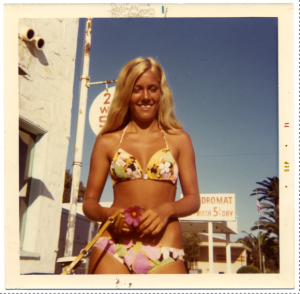 MARK: Mail to you, I remember, used to go to “Tower Mag Hell.” How’d your division come to get that name?
MARK: Mail to you, I remember, used to go to “Tower Mag Hell.” How’d your division come to get that name?
DOUG: It was my idea. It seemed like fun. My boss, Heidi, said I had to change it, but Bud, the number-two guy in the company, said I could call it whatever I wanted, just so long as it was working well. And, when Heidi told me I couldn’t call myself Chief Dude, he said, “You can call yourself anything you want, except Vice President… we have too many of those already.”
Mag Hell was a fun place to work for years… When someone in the company needed a place to put someone, that was the place. Luckily, we had a long run with good people. One of the guys, Adrian Tomine, is now doing covers for the New Yorker. And John McRae of Cake was there for a long time. Chi, the bassist for the Deftones worked there too. He died not too long ago, after a few years of coma. Everyone that worked with him loved him, but I really dug Chino, the vocalist, who also worked at Mag Hell. I saw him a few years ago and said, “You guys were on the cover of two English music mags in one month.” He said, “Isn’t it funny? For two years I was shipping magazines, and now I’m on the cover.”
MARK: And did I once hear you refer to Mag Hell as Zasshi Jigoku?
DOUG: Zasshi Jigoku is “Mag Hell” in Japanese. It came from the Shibuya store, back in the beginning. By the way, we imported a ton of Japanese magazines. We would take 1,500 each month of the girly titles. There were two mainly. They had a weird law in the beginning, since changed, that you couldn’t show genitals or public hair. if you sent a U.S. porn mag over, they would black out the pubic hair and genitals before delivering it. I remember my last Tower trip to Japan, a cordon of Japanese people came to my hotel and took me out for a beer. And they showed me a magazine. “LOOK, DOUG-SAN, HAIR MAGAZINE!” Because it was forbidden, it was hot stuff. They treat hair stuff like we do underage stuff is here. The Japanese, by the way, have no problem with underage stuff that I ever saw.
 MARK: Why, in your opinion, did Tower eventually go belly-up? Was it all due to the internet, or was there something more to it?
MARK: Why, in your opinion, did Tower eventually go belly-up? Was it all due to the internet, or was there something more to it?
DOUG: I was gone as of the Ides of March, 1999. So, I missed much of what went down. The simple answer is that the music business was changing. There had been tremendous growth with the flood of compact discs. I don’t think many people in Tower, or anywhere else, realized that there was going to be this huge bubble. People were re-buying music they already had on vinyl in this new compact disc format. And this was even more extreme in the classical realm, as much of what was being released on CD was never available before. And then the bubble just burst.
MARK: Any regrets, about zines or anything else?
DOUG: I wish I’d been a better manager. I was more interested in traveling than managing. I wish I’d found a good warehouse manager after the first one quit. I wish I’d done a better job with the international stores. I also regret having had to fire a few longtime employees that were cheating on the time clock, when we finally had one. A bunch of money was lost in returns in Kuala Lumpur because we didn’t have a manual explaining the process. We also had next to nothing in terms of communications. I failed there. Bit I did better elsewhere. In Japan, where there were two big newsstands, I’d give myself a C+. In Mexico, a C-. In London, a B. In Glasgow, a B-. I reached my Peter Principle with management. With buying, though, I was impressive. Tower sold stuff that turned folks on to things they had never known.
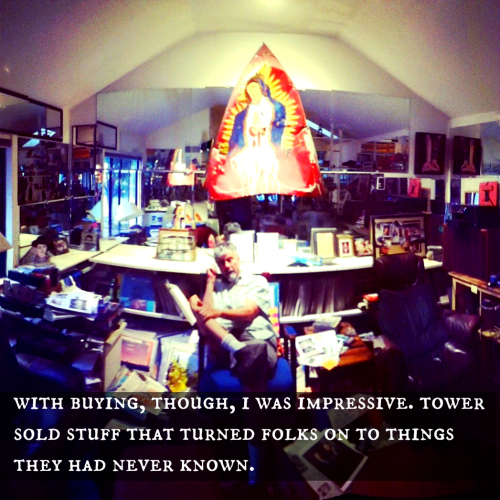
[note: If you like what you’ve read and want more about the American underground press and the people behind it, be sure to check the other interviews in the History of Zines series. And, if you didn’t follow the link when I mentioned it earlier, check out Beautiful America, the short documentary film that Chloe Colpé and Xavier Carcelle made about Doug’s hitchhiker project.]
update: I just received a letter from Doug. Along with his note were copies of several letters to Tower’s corporate offices concerning publications that he had decided to put on the shelves of various stores. Following is one of those letters of complaint, along with his response.
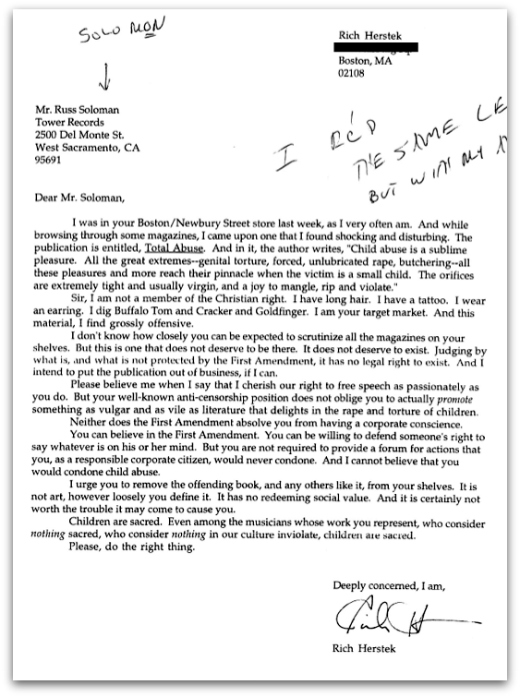
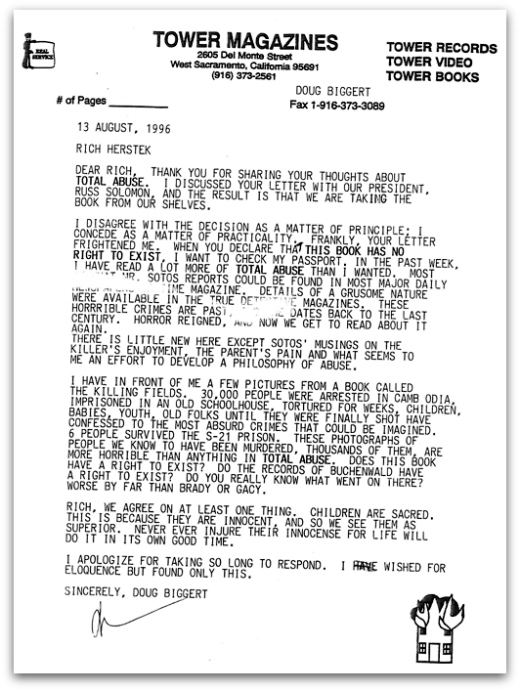
, “There’s a lot to be said for making people laugh.”

